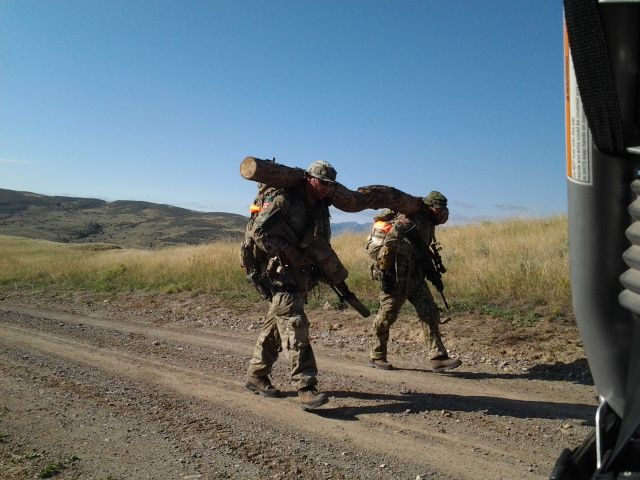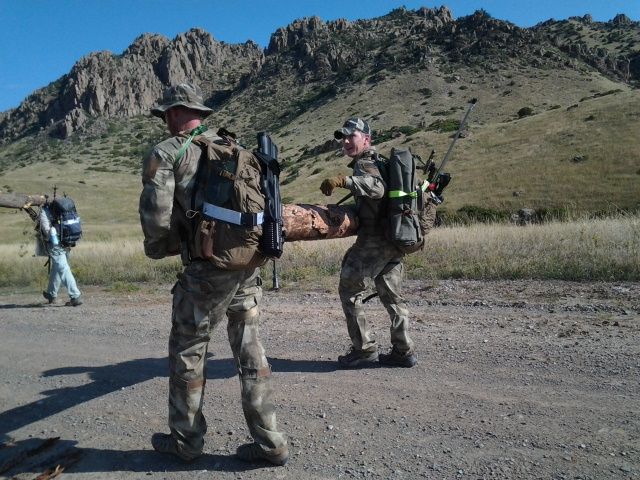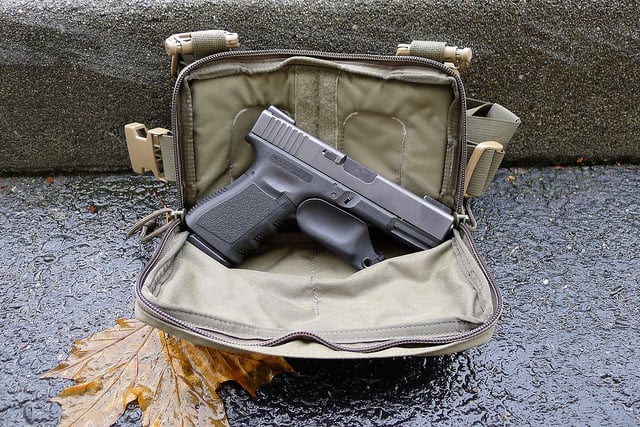I had an interesting little talk with some gentlemen at this year's Sniper Adventure Challenge up in Wyoming. It commonly sees 2-man teams from all over the Nation, and many are current or former Recon and Scout Sniper Marines, Rangers, SF, LE SRT's, or professional endurance racers.
Anyway, quite a few teams had 6.5 Grendel's for both their carbines and long guns, as the competition requires that one team member carry a long gun for distance targets, and the other carries a carbine for closer ranges, while both carry sidearms, in addition to many other essential items on a mandatory packing list.
The competitors then embark on a long distance land navigation course using only map and compass, while encountering different challenges at some of the points along the way. Some of the challenges involve shooting, water crossing, obstacles, log carries, problem-solving, escape and evasion, lock picking, mountaineering, decryption of cyphers, foreign weapons familiarity and employment, scenario-based events (this year was an ambush at a vehicle check point, with a mission to protect their driver in a force on force encounter using high end airsoft guns, masks, etc.), and a tractor tire flip challenge (with steel rim).
If you finished the mandatory check points and challenges of this competition, you ended up walking over 32 miles in the mountains, with kit.


Anyway, one of the teams was composed of 2 formally trained USMC Scout Snipers, one of whom won the sprint division with another Recon Marine last year, and another who was an instructor at one of the Scout Sniper Schools. They both were carrying 6.5 Grendel's, one a 16", the other a 24". Comments were that it would make a lot of sense to adopt the cartridge for the sniping community, since it is so small, and leave the .308 guns to the side.
Here's one of the shooting challenges, where the teams had to locate and engage small steel targets from uncomfortable positions, starting with the carbine, then long gun, then run down the hill and shoot pistol at steel at close range.

I'm thinking about the logistics again, but many units have grown accustomed to getting M118LR and only running that in their M110's, without having to ever use M80. We all agreed that we felt cheated humping around big, fat, heavy bolt guns that spit out lesser BC pills, when we could have had a room-clearing capable carbine that also reaches out past the supersonic range of M118LR, or at least matches it from a much shorter barrel, in an M4 platform no less.
Anyway, quite a few teams had 6.5 Grendel's for both their carbines and long guns, as the competition requires that one team member carry a long gun for distance targets, and the other carries a carbine for closer ranges, while both carry sidearms, in addition to many other essential items on a mandatory packing list.
The competitors then embark on a long distance land navigation course using only map and compass, while encountering different challenges at some of the points along the way. Some of the challenges involve shooting, water crossing, obstacles, log carries, problem-solving, escape and evasion, lock picking, mountaineering, decryption of cyphers, foreign weapons familiarity and employment, scenario-based events (this year was an ambush at a vehicle check point, with a mission to protect their driver in a force on force encounter using high end airsoft guns, masks, etc.), and a tractor tire flip challenge (with steel rim).
If you finished the mandatory check points and challenges of this competition, you ended up walking over 32 miles in the mountains, with kit.


Anyway, one of the teams was composed of 2 formally trained USMC Scout Snipers, one of whom won the sprint division with another Recon Marine last year, and another who was an instructor at one of the Scout Sniper Schools. They both were carrying 6.5 Grendel's, one a 16", the other a 24". Comments were that it would make a lot of sense to adopt the cartridge for the sniping community, since it is so small, and leave the .308 guns to the side.
Here's one of the shooting challenges, where the teams had to locate and engage small steel targets from uncomfortable positions, starting with the carbine, then long gun, then run down the hill and shoot pistol at steel at close range.

I'm thinking about the logistics again, but many units have grown accustomed to getting M118LR and only running that in their M110's, without having to ever use M80. We all agreed that we felt cheated humping around big, fat, heavy bolt guns that spit out lesser BC pills, when we could have had a room-clearing capable carbine that also reaches out past the supersonic range of M118LR, or at least matches it from a much shorter barrel, in an M4 platform no less.





Comment